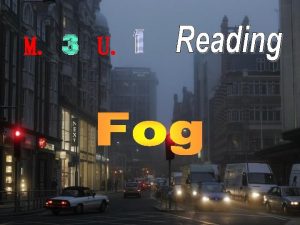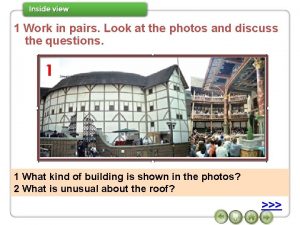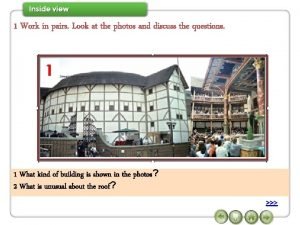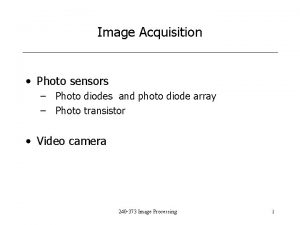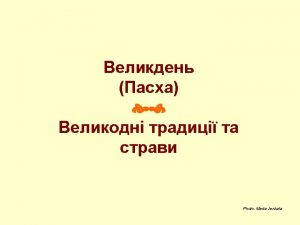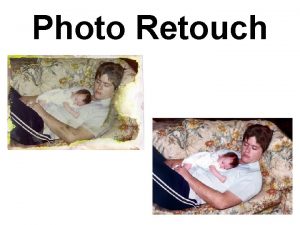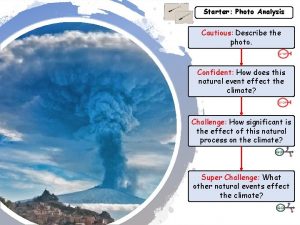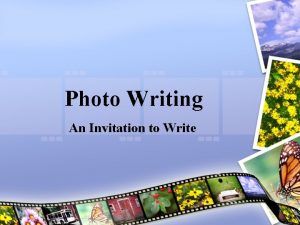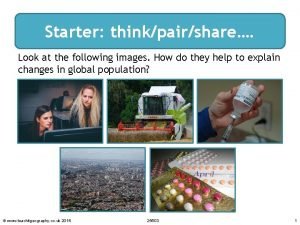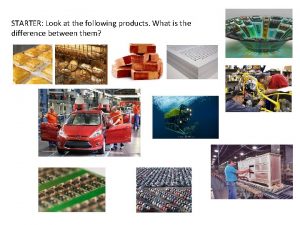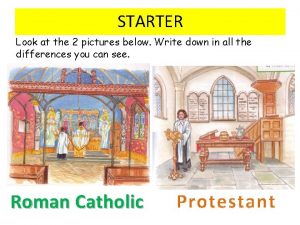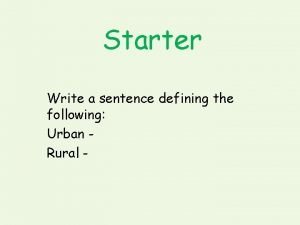Starter Look at the following photo Write 5



















- Slides: 19

Starter Look at the following photo. Write 5 questions about the photo to develop your enquiry skills. THINK (5 w’s: Why, What, When, Where, Who)

TOPIC 1 – RIVER LANDSCAPES AND PROCESSES River Basins Key Question – What are the features of a drainage Basin? Key terms weathering erosion mass movement transportation deposition drainage basin confluence tributary river source river mouth Learning Objectives Must: Should: Could: To label, identify and describe the parts of a drainage Basin. Explain a variety of physical processes and how they interact to shape the landscape. To explain how a river changes, from the source to the mouth and explain how this happens.

What are the different parts of a river? 6 watershed 5 3 4 1 2

River basin River source River mouth Tributary Confluence Watershed Task Match the key terms to the correct place on the picture. © Pearson Education Ltd 2016. Copying

Answers River source Watershed Tributary Confluence © Pearson Education Ltd 2016. Copying River mouth

Name any physical processes that you think might change a river landscape. Task 2 Think the specific names of different processes Physical processes I can… Name and describe the four physical processes that can change river landscapes. Describe each type of erosion, weathering, mass movement and transport process. Explain how each of the different processes interacts to cause changes to river landscapes.

I can… Name and describe the four physical processes that can change river landscapes. Describe each type of erosion, weathering, mass movement and transport process. Explain how each of the different processes interacts to cause changes to river landscapes.

Which physical processes change river landscapes? Weathering is the breakdown and decay of rock by natural processes, usually acting on the river valley sides. Mass movement is the movement of rocks and soil downslope due to gravity, helped by weaker rocks, steep slopes and heavy rainfall. Mass movements can be very slow – only a few millimetres a year – or sudden and rapid. River erosion involves the action of water wearing away the rocks and soils on the valley bottom and sides. Transportation is where a river picks up and carries material as it flows downstream. When a river no longer has enough energy to carry its load, deposition occurs. As the river’s discharge and velocity reduce, the heaviest material is deposited first – for example, after flooding events.

River Severn – long profile journey : Answer these questions as we watch the BBC learning zone clip 340 http: //www. bbc. co. uk/learningzone/clips/the-river-severn-the-uppercourse/3076. html • What’s happening in the upper course? • What’s happening in the middle course? • What’s happening in the lower course? Task 3

How does a river change from Source to Mouth?

River Profiles – all rivers have 2 types of profiles Long profile A Cross profile (cross section)

3. 1. 2. Task 4 6. 4. 5. Source 5 2 1 ACTIVITY 1 1) Put these photos in order from source to mouth 2) What do you notice about how the river changes? (depth, amount of water, width, steepness, amount of rocks , speed of water) 3 4 6 Mouth

Activity 2 – River characteristics 1)Do the key characteristics increase or decrease from source to mouth 2)Try to give reasons for the changes Key Characteristics of a river Gradient (Steepness) Width Depth Increase/decrease Reasons from source Decreases Increases Velocity (speed of water) Increases Discharge (volume of water) Increases Pebble size Pebble roundness Decreases Increases

Erosion processes

There are 4 types of erosion • Abrasion: Material carried in the river rubbing against the bed and banks of the channel wearing them away. • Hydraulic action: occurs from water hitting the river bed and bank and wearing them away. Important during high-velocity flows • Attrition: sediment/rocks that are carried by the river collide with one another causing the edges to be knocked off. The continued collision creates rounder, smaller rocks downstream. • Solution: river water is slightly acidic so dissolves some rocks and minerals – particularly limestone and chalk.

River transportation

There are 4 types of transportation • Traction: Rolling large stones along the bed • Saltation: Smaller sized particles bounce along the bed in a leap-frog movement • Suspension: Silt and clay-sized particles are carried within the water flow • Solution: Some minerals dissolve in the water which are carried by the river

Questions Describe one way mechanical (freeze-thaw) weathering might have an impact on river landscapes. Challenge question Compare how mechanical (freeze-thaw) weathering and chemical (acid-rain) weathering might have an impact on river landscapes.

 Look up and to the left
Look up and to the left Mu look
Mu look Look at the photo. answer the questions with short answers
Look at the photo. answer the questions with short answers Use the photos to answer the questions
Use the photos to answer the questions Work in pairs look at the pictures and answer the questions
Work in pairs look at the pictures and answer the questions Work in pairs. look at the photo and answer the questions
Work in pairs. look at the photo and answer the questions Activity 3.picture analysis
Activity 3.picture analysis Activity 1 looking back
Activity 1 looking back Look at activity 1 and write
Look at activity 1 and write подчеркни правильное слово we write
подчеркни правильное слово we write Look at the poster and answer the questions
Look at the poster and answer the questions Hát kết hợp bộ gõ cơ thể
Hát kết hợp bộ gõ cơ thể Bổ thể
Bổ thể Tỉ lệ cơ thể trẻ em
Tỉ lệ cơ thể trẻ em Voi kéo gỗ như thế nào
Voi kéo gỗ như thế nào Chụp tư thế worms-breton
Chụp tư thế worms-breton Alleluia hat len nguoi oi
Alleluia hat len nguoi oi Các môn thể thao bắt đầu bằng tiếng bóng
Các môn thể thao bắt đầu bằng tiếng bóng Thế nào là hệ số cao nhất
Thế nào là hệ số cao nhất

